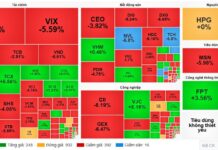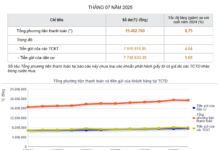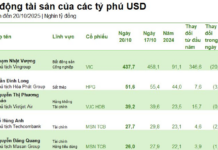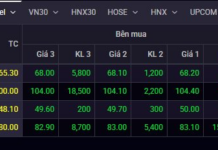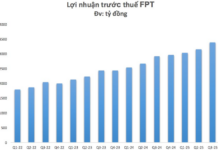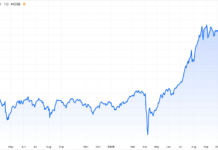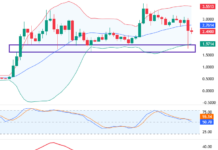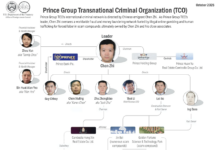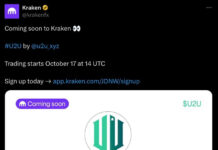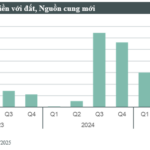Trading was lackluster this morning, mainly due to investors’ reluctance to buy, with sell-side orders gradually pushing prices down. Except for the first few minutes when the VN-Index was slightly positive, the rest of the session saw a continuous downward trend, ending the morning at its lowest point with four times as many losers as gainers.
Today marks the derivatives expiry, and caution prevailed after three consecutive losing sessions. The large-cap stocks failed to stabilize the market, despite VCB and VIC trading in the green. The number of declining stocks far outweighed the gainers in the VN30 basket (3 gainers vs 25 losers).
The VN-Index opened at its intraday high, gaining nearly four points, before plunging to a loss of 5.61 points (-0.44%) at the midday break. The decline was evident in the heavyweights, but the overall breadth also indicated selling pressure across the market. Specifically, the best breadth for the index this morning was 162 gainers vs 71 losers, but by 10 am, it narrowed to 159 gainers vs 127 losers, and by 11 am, it stood at 108 gainers vs 185 losers. The session ended with only 67 gainers vs 270 losers.
The VN30-Index closed the morning session down 0.42%, with only three stocks in the green: VCB up 0.33%, VIC up 0.24%, and ACB up 0.19%. All other large-cap stocks, except for the unchanged TCB, were in the red. Fortunately, the decline in the heavyweights was relatively modest, with HPG leading the top 10 losers with a 0.92% drop. However, eight stocks in this basket fell by more than 1%, with SSB and GVR being the weakest performers, down 2.1% and 1.66%, respectively.
Across the HoSE, out of the 270 declining stocks, 78 fell by more than 1%. Only four stocks had notable liquidity above VND 100 billion: MSN decreased by 1.24% with a matching volume of VND 216.9 billion; HDB dropped by 1.11% with VND 137.7 billion; DBC fell by 2.84% with VND 122 billion; and HCM declined by 1.32% with VND 101.6 billion. The trading value on this exchange decreased by over 6% from the previous morning, reaching just over VND 4,766 billion. Many stocks witnessed a significant decline in combination with low liquidity, indicating a withdrawal of funds.
Apart from the expiry effect, the contraction in liquidity also reflected investors’ disappointment with the 1300-point region as the same scenarios kept repeating. If the market fails to break through, investors, though not ready to “disband” their portfolios, have no incentive to buy more. As a result, the market is left in the hands of sellers, and the extent of the price decline will be determined by them.

Stocks that went against the downward trend this morning mostly had modest liquidity, with a few trading in the hundreds of millions to a few billion dong. Out of the 67 gainers, 22 rose by more than 1%, but none stood out. While YEG, HVH, PVP, MSH, TIP, and NO1 saw strong price action, their liquidity was limited to a few billion dong at most. YEG, the best performer, had a matching volume of just VND 13.7 billion. This level of liquidity does not guarantee price reliability as it involves only a small number of participants.
Foreign investors continued their substantial net selling on HoSE, withdrawing another VND 288.8 billion this morning. This was the fourth consecutive session of net selling exceeding VND 100 billion. While no single stock experienced a dramatic sell-off, the selling was spread across numerous stocks. Notable stocks included HDB (-VND 48.3 billion), VHM (-VND 27.2 billion), HPG (-VND 24.5 billion), and DBC (-VND 20.1 billion). On the buying side, STB stood out with a net purchase of VND 72.3 billion. This continuous net selling trend suggests that this week is shaping up to be a record-breaking 10th week of net selling and the fourth consecutive week of outflows.
The VN-Index closed the morning session down 5.61 points, falling to 1273.87 points. The lowest close in October was 1269.93 points, and the intramonth low was 1264.65 points. Thus, the index has retreated back to its recent short-term low, which had initially inspired hopes for a more positive market sentiment with the Q3 financial reporting season. However, those hopes have not been fulfilled so far.

